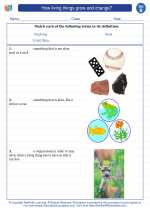Taxonomy
Taxonomy is the science of classification. It involves the identification, naming, and categorization of living organisms based on their characteristics and evolutionary relationships. The system of taxonomy was developed by the Swedish botanist Carl Linnaeus in the 18th century.
Why is Taxonomy Important?
Taxonomy helps scientists organize and understand the diversity of life on Earth. By classifying organisms into groups based on shared characteristics, taxonomy provides a framework for studying the relationships between different species and their evolutionary history. It also allows for easier communication and collaboration among scientists.
The Taxonomic Hierarchy
The taxonomic hierarchy is a system of nested categories used to classify organisms. The main taxonomic levels, from broadest to most specific, are:
- Kingdom: The highest level of classification, such as Animalia or Plantae.
- Phylum: Groups organisms based on general body plan.
- Class: Organisms with similar characteristics are grouped together.
- Order: Contains one or more families.
- Family: Groups of similar genera.
- Genus: A group of species that are closely related.
- Species: The most specific level, consisting of individual organisms that can interbreed.
Study Guide
To understand taxonomy, students should focus on the following key concepts:
- Understanding the purpose and importance of taxonomy.
- Memorizing the taxonomic hierarchy and the criteria used to classify organisms at each level.
- Practicing the classification of specific organisms into their respective taxonomic groups.
- Studying evolutionary relationships and the use of molecular and genetic data in modern taxonomy.
- Exploring the work of Carl Linnaeus and the historical development of taxonomy.
By mastering these concepts, students will gain a solid understanding of taxonomy and its significance in the field of biology.
[Taxonomy] Related Worksheets and Study Guides:
.◂Science Worksheets and Study Guides Second Grade. How living things grow and change?

 Activity Lesson
Activity Lesson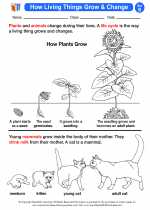
 Worksheet/Answer key
Worksheet/Answer key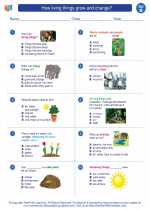
 Worksheet/Answer key
Worksheet/Answer key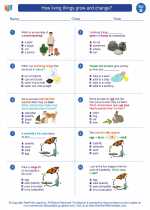
 Worksheet/Answer key
Worksheet/Answer key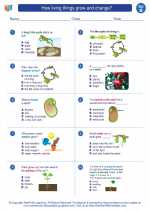
 Worksheet/Answer key
Worksheet/Answer key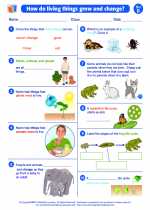
 Vocabulary/Answer key
Vocabulary/Answer key